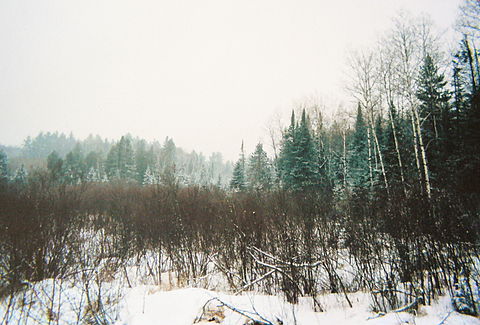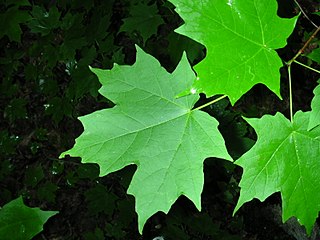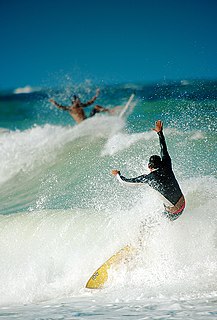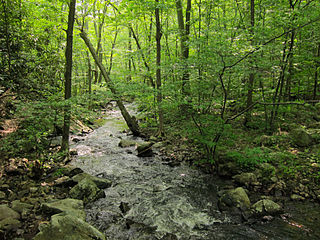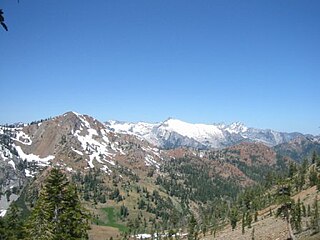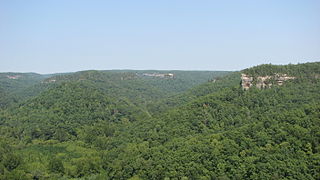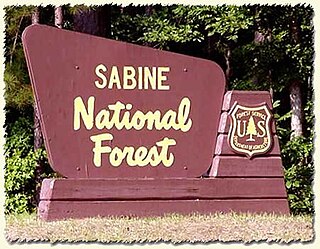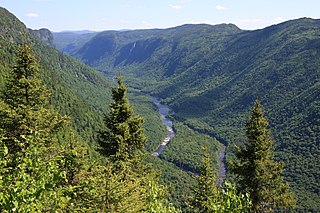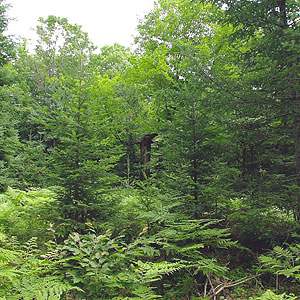| Chequamegon-Nicolet National Forest | |
|---|---|
IUCN category VI (protected area with sustainable use of natural resources) | |
 The Nicolet National Forest in November | |
| Location | Wisconsin, United States |
| Coordinates | 46°08′03″N90°51′25″W / 46.13417°N 90.85693°W Coordinates: 46°08′03″N90°51′25″W / 46.13417°N 90.85693°W |
| Area | 1,534,225 acres (6,208.79 km2) [1] |
| Established | 1933 [2] |
| Governing body | U.S. Forest Service |
| Website | Chequamegon-Nicolet National Forest |
The Chequamegon-Nicolet National Forest ( /ʃɪˈwɑːmɪɡən

Wisconsin is a U.S. state located in the north-central United States, in the Midwest and Great Lakes regions. It is bordered by Minnesota to the west, Iowa to the southwest, Illinois to the south, Lake Michigan to the east, Michigan to the northeast, and Lake Superior to the north. Wisconsin is the 23rd largest state by total area and the 20th most populous. The state capital is Madison, and its largest city is Milwaukee, which is located on the western shore of Lake Michigan. The state is divided into 72 counties.

Logging is the cutting, skidding, on-site processing, and loading of trees or logs onto trucks or skeleton cars.

The Civilian Conservation Corps (CCC) was a public work relief program that operated from 1933 to 1942 in the United States for unemployed, unmarried men. Originally for young men ages 18–25, it was eventually expanded to ages 17–28. Robert Fechner was the first director of the agency, succeeded by James McEntee following Fechner's death. The CCC was a major part of President Franklin D. Roosevelt's New Deal that provided unskilled manual labor jobs related to the conservation and development of natural resources in rural lands owned by federal, state, and local governments. The CCC was designed to provide jobs for young men and to relieve families who had difficulty finding jobs during the Great Depression in the United States. Maximum enrollment at any one time was 300,000. Through the course of its nine years in operation, 3 million young men participated in the CCC, which provided them with shelter, clothing, and food, together with a wage of $30 per month.
Contents
Legally two separate national forests—the Chequamegon National Forest and the Nicolet National Forest—the areas were established by presidential proclamations in 1933 and have been managed as one unit since 1993.
The Chequamegon National Forest comprises three units in the north-central part of the state totaling 865,825 acres (3,503.87 km2). In descending order of forestland area, it is located in parts of Bayfield, Ashland, Price, Sawyer, Taylor, and Vilas counties. Forest headquarters are in Park Falls. There are local ranger district offices in Glidden, Hayward, Medford, Park Falls, and Washburn. [4] Moquah Barrens Research Natural Area is located with the Chequamegon. [5] Lying within the Chequamegon are two officially designated wilderness areas of the National Wilderness Preservation System. These are the Porcupine Lake Wilderness and the Rainbow Lake Wilderness.

Bayfield County is a county located in the U.S. state of Wisconsin. As of the 2010 census, the population was 15,014. Its county seat is Washburn. The county was created in 1845 and organized in 1850.

Ashland County is a county located in the U.S. state of Wisconsin. As of the 2010 census, the population was 16,157. Its county seat is Ashland. The county was formed on March 27, 1860, from La Pointe County.

Price County is a county in the U.S. state of Wisconsin. As of the 2010 census, the population was 14,159. Its county seat is Phillips.
The Nicolet National Forest covers 664,822 acres (2,690.44 km2) of northeastern Wisconsin. It is located in parts of Forest, Oconto, Florence, Vilas, Langlade, and Oneida counties. Forest headquarters are in Rhinelander. There are local ranger district offices in Eagle River, Florence, Lakewood, and Laona. Bose Lake Hemlock Hardwoods and the Franklin Lake Campground are located in the Nicolet. [6] [7] Lying within the Nicolet are three wildernesses—the Blackjack Springs Wilderness, the Headwaters Wilderness, and the Whisker Lake Wilderness.

Forest County is a county in the U.S. state of Wisconsin. As of the 2010 census, the population was 9,304. Its county seat is Crandon.

Oconto County is a county in the U.S. state of Wisconsin. As of the 2010 census, the population was 37,660. Its county seat is Oconto. The county was established in 1851.

Florence County is a county located in the U.S. state of Wisconsin. As of the 2010 census, the population was 4,423, making it the second-least populous county in Wisconsin. Its county seat is Florence.

